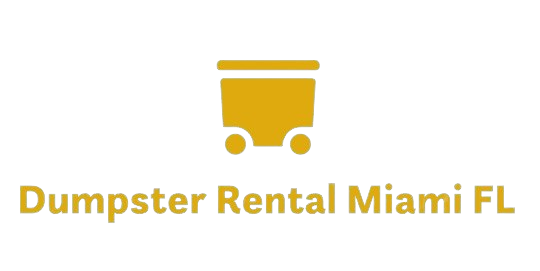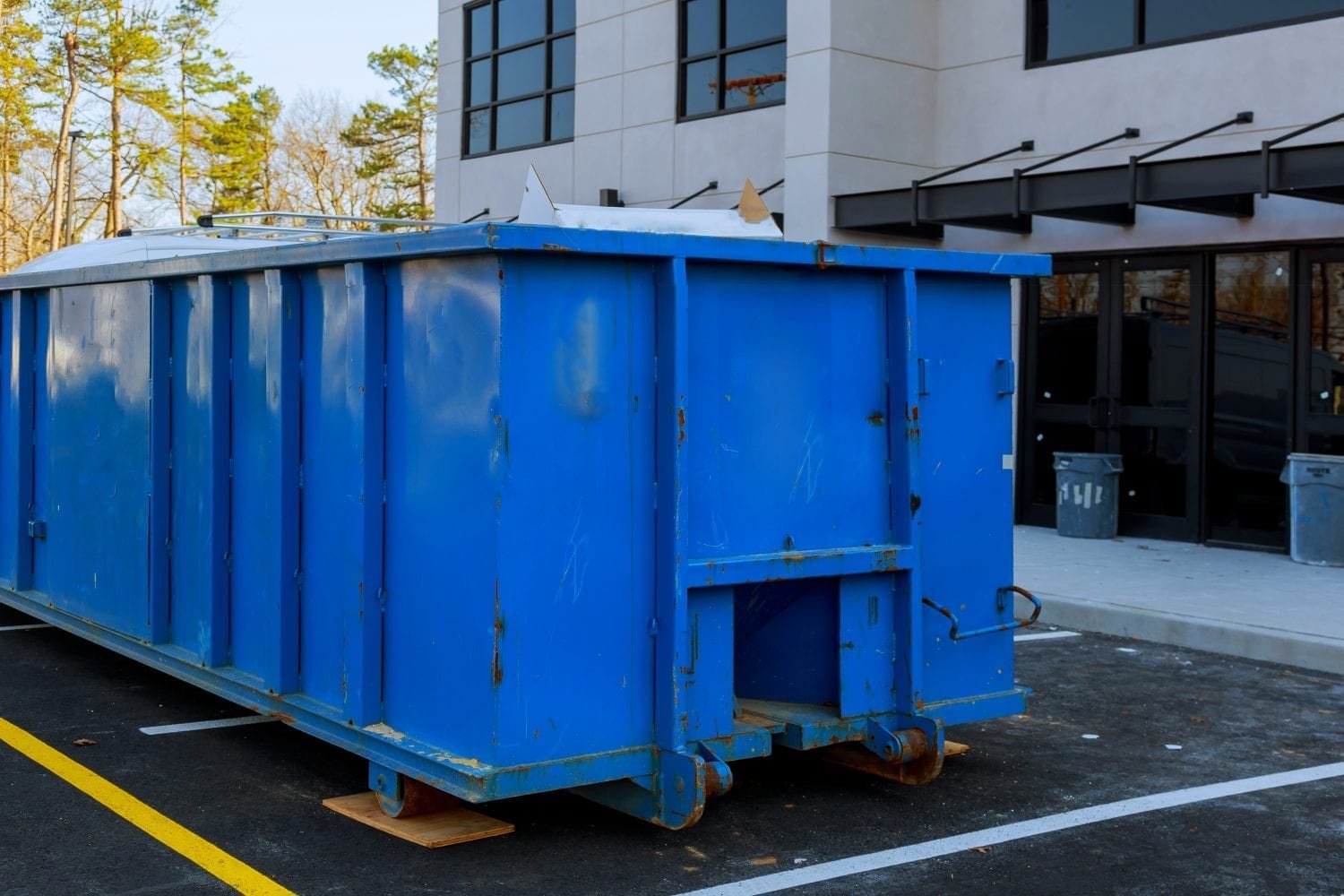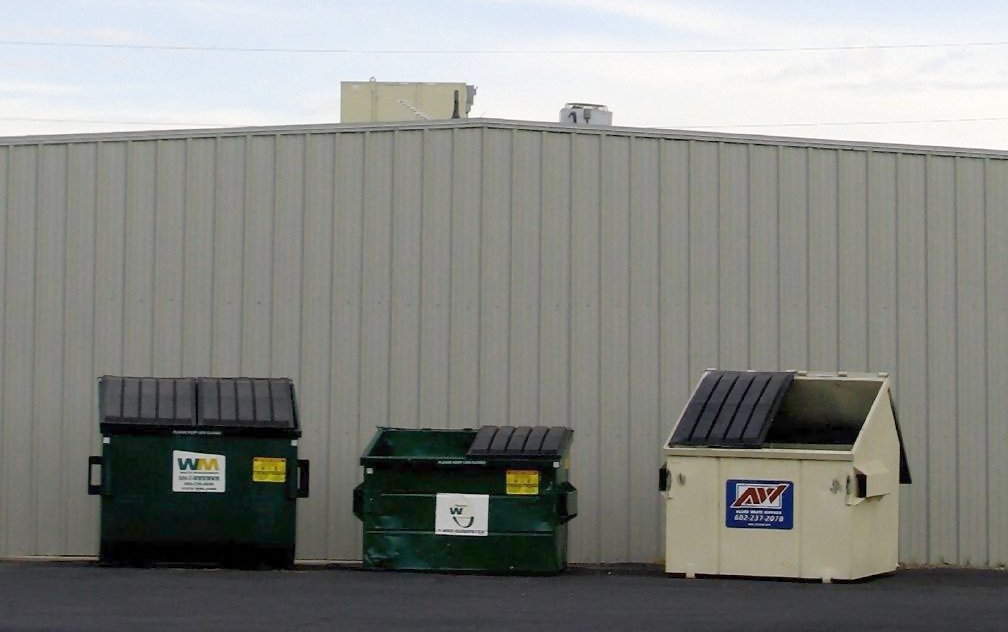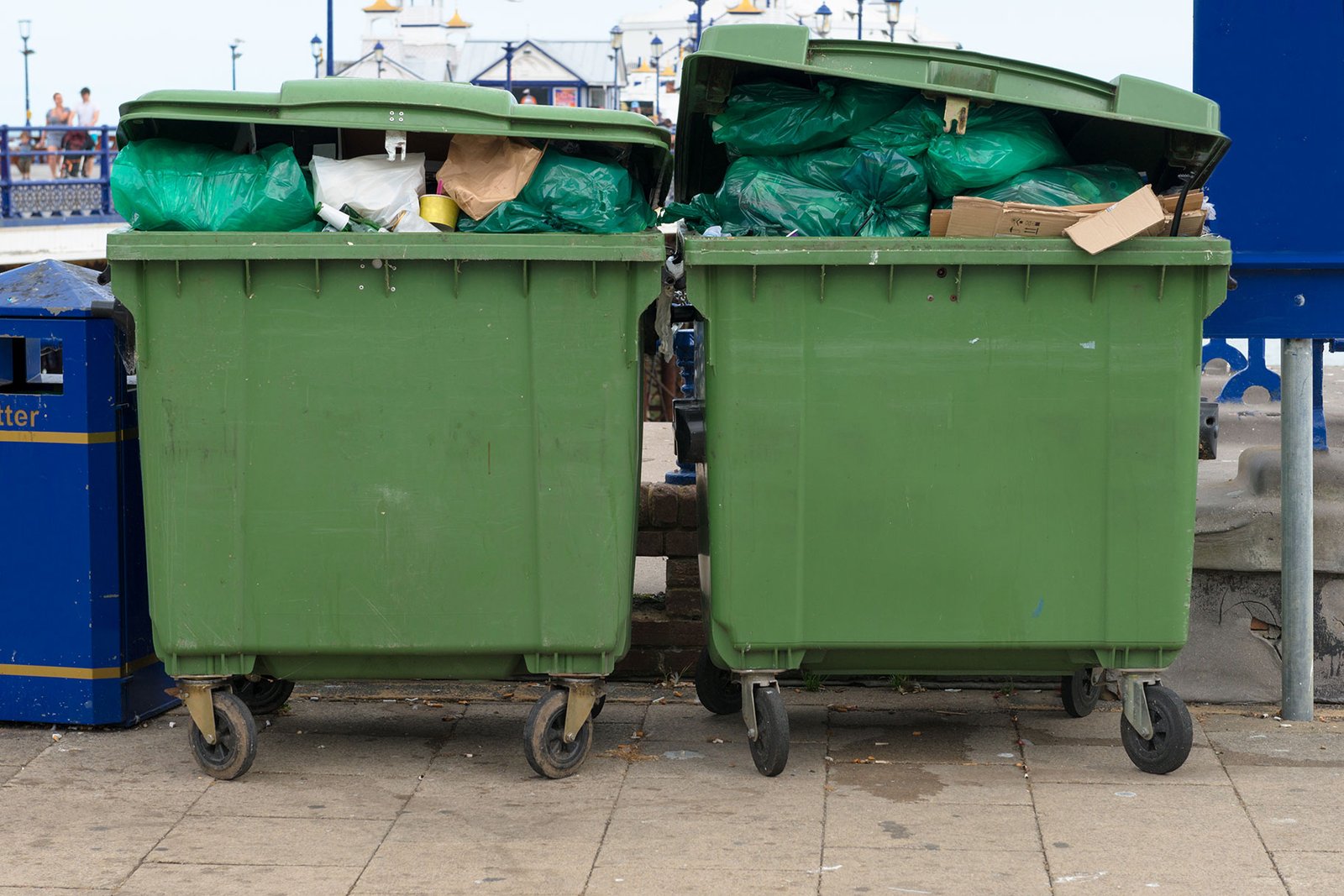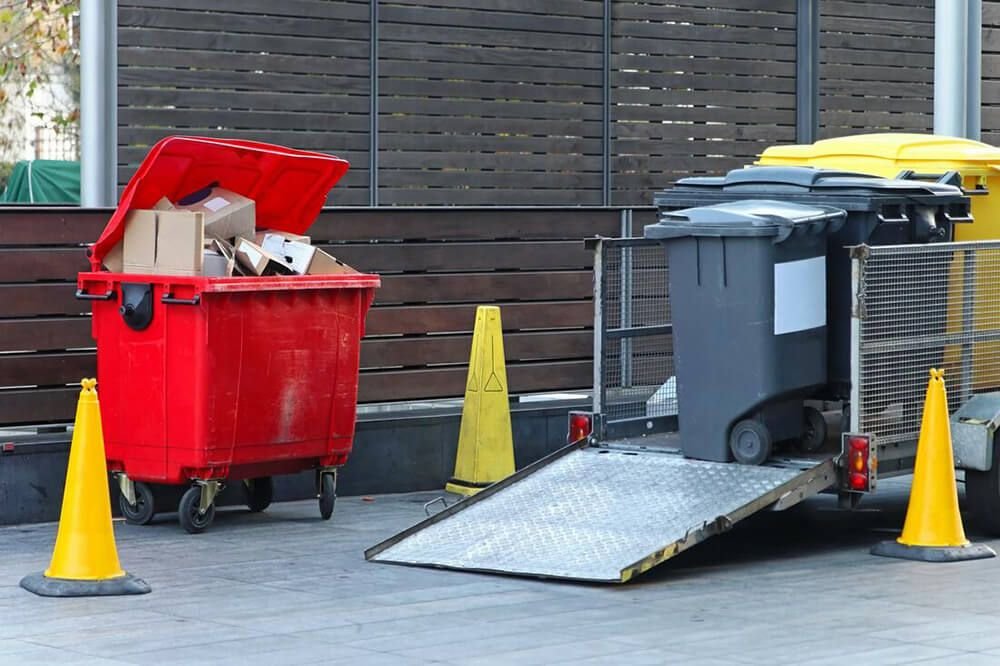Prohibited Items for Disposal in Miami Dumpsters
Imagine a typical scenario: Mary, a resident of Miami, decides to declutter her home and dispose of unwanted items. As she gathers various possessions from her attic, she stumbles upon an old canister of paint. Uncertain about the proper method of disposal, Mary contemplates tossing it into the nearest dumpster. However, little does she know that disposing of certain items in dumpsters is strictly prohibited within Miami city limits. This article aims to shed light on the regulations surrounding prohibited items for disposal in Miami dumpsters, serving as a valuable resource for residents like Mary who seek to responsibly discard their belongings.
In order to maintain public safety and adherence to environmental standards, local authorities have implemented strict guidelines regarding the disposal of specific materials. While dumpsters are commonly used by individuals to efficiently remove waste from their properties, they are not intended for indiscriminate dumping. A prime example of this arises when considering hazardous substances such as chemicals or paints. These substances pose significant risks if released into landfills or water sources and require specialized handling methods to ensure safe disposal. Thus, it becomes crucial for Miami residents to familiarize themselves with the list of prohibited items before utilizing dumpsters for waste removal purposes.
Household Hazardous Waste
Imagine the following scenario: a resident of Miami, unaware of the proper disposal methods, decides to dispose of an old can of paint by throwing it into their dumpster. Unbeknownst to them, this seemingly harmless act could have severe consequences for both human health and the environment. Household hazardous waste (HHW) is a category that encompasses various materials commonly found in homes that pose risks due to their toxic, flammable, corrosive or reactive nature.
To raise awareness about the importance of responsible waste management, let us delve into four specific examples of household hazardous waste items:
- Cleaning Products: Commonly used cleaning agents such as bleach, ammonia-based cleaners, and drain openers contain chemicals that can be harmful if not disposed of properly.
- Paints and Solvents: Both oil-based and latex paints fall under this category. These substances often contain toxic compounds like lead and mercury that can contaminate soil and water sources if improperly discarded.
- Batteries: Whether they are single-use alkaline batteries or rechargeable ones, they should never find their way into dumpsters as they contain heavy metals like cadmium and nickel which are detrimental to our ecosystem.
- Pesticides: Insecticides, herbicides, and rodenticides may effectively tackle pest problems around your home but disposing of these substances incorrectly poses serious threats to both humans and wildlife.
It is crucial that residents understand how to handle HHW responsibly. To assist you further in identifying common household hazardous waste items, here is a table detailing some examples along with their potential dangers:
| Item | Potential Dangers | Disposal Method |
|---|---|---|
| Old Medications | Risk of abuse | Properly dispose at authorized medication take-back sites |
| Motor Oil | Soil contamination | Recycle through local recycling centers |
| Compact Fluorescent Bulbs | Mercury release | Bring to designated recycling locations |
| Electronics | Toxic components | Recycle at electronic waste collection events |
By understanding the risks associated with household hazardous waste and adopting responsible disposal practices, we can protect our communities and preserve the environment for future generations. In the subsequent section, we will explore another category of prohibited items: construction debris.
Construction Debris
Household hazardous waste poses a significant risk to public health and the environment if improperly disposed of. To ensure the safety and well-being of our community, it is crucial to understand what items are considered household hazardous waste and should not be disposed of in Miami dumpsters. Let’s explore some examples of these prohibited items along with their potential impacts.
Imagine a scenario where someone decides to dispose of old paint cans by throwing them into a dumpster without proper consideration. Unfortunately, this can lead to serious consequences such as soil and water contamination. In addition to paints, there are several other common household hazardous wastes that must be handled appropriately:
- Pesticides and herbicides: These chemicals used for pest control or weed elimination can cause harm to human health and wildlife.
- Cleaning products: Many cleaning agents contain corrosive substances that can pose risks if released into the environment.
- Batteries: Both rechargeable and non-rechargeable batteries contain heavy metals like mercury, cadmium, or lithium, which can contaminate groundwater if not properly recycled.
- Fluorescent light bulbs: Compact fluorescent bulbs (CFLs) and other types of lighting containing mercury require special handling due to their toxic properties.
To emphasize the importance of responsible disposal practices further, consider the following table showcasing the potential environmental impact when these items end up in landfills:
| Item | Environmental Impact |
|---|---|
| Paint | Soil and water contamination |
| Pesticides | Harmful effects on ecosystems |
| Cleaning Products | Water pollution |
| Batteries | Groundwater contamination |
It is evident that disposing of household hazardous waste inappropriately can have far-reaching negative consequences. By educating ourselves about proper disposal methods, we contribute to preserving our environment and safeguarding public health.
In the subsequent section about electronic waste, we will explore another category of prohibited items that require special disposal considerations. It is crucial to understand how electronic waste can impact both human health and the environment when not handled correctly.
Electronic Waste
As we conclude our discussion on construction debris, it is important to shift our attention to another significant category of prohibited items for disposal in Miami dumpsters – electronic waste. Improper disposal of electronic devices can have severe environmental consequences and pose a threat to human health. To illustrate this issue further, let us consider an example.
Example Scenario:
Imagine a scenario where John, a resident of Miami, decides to dispose of his old laptop by throwing it into a dumpster. Unbeknownst to him, the hazardous materials present in the laptop’s battery leak out over time due to improper handling during transportation and subsequent dumping at a landfill site. These toxic substances seep into the soil and contaminate nearby water sources, endangering both wildlife and local communities.
Electronic waste typically includes devices such as computers, televisions, mobile phones, printers, and other discarded electrical equipment. Due to their complex composition and potential toxicity, these items require specialized recycling processes that ensure proper extraction and treatment of harmful components. Disposing of electronic waste incorrectly not only harms the environment but also wastes valuable resources that could be recovered through appropriate recycling methods.
To emphasize the importance of responsible e-waste management practices, here are some key considerations:
- Environmental Impact: The improper disposal of electronics contributes to pollution in various ways—contaminating air, soil, and water with heavy metals like lead or mercury.
- Resource Conservation: Recycling electronic devices allows for the recovery of precious metals (e.g., gold) and rare earth elements found within them which reduces reliance on mining activities.
- Data Security: Discarded electronics may still contain sensitive information that can be accessed if not properly handled during disposal.
- Global Responsibility: Recognizing that electronic waste has become a worldwide concern necessitates individual accountability in adhering to proper disposal methods.
To further illustrate the significance of responsible e-waste management, consider the following table showcasing some alarming statistics:
| Statistics | Impact |
|---|---|
| Approximately 50 million | Tons of electronic waste |
| computers are discarded | generated worldwide annually |
| globally each year. | |
| Only about 20% | E-waste is recycled properly, |
| of global e-waste | leaving a vast majority |
| gets recycled; | improperly disposed of. |
As we move forward, it is crucial to understand how improper handling and disposal practices for medical waste can have severe consequences on public health and safety.
Please let me know if there’s anything else I can assist you with!
Medical Waste
Transitioning from the previous section on electronic waste, it is imperative to highlight another significant category of prohibited items that should not be disposed of in Miami dumpsters. Medical waste poses a serious threat to public health and safety if improperly discarded. To illustrate the potential consequences, let us consider a hypothetical case study involving a local hospital’s improper disposal practices.
In this scenario, Hospital X fails to adhere to proper medical waste management protocols, leading to the disposal of hazardous materials such as used syringes, contaminated dressings, and expired medications into regular trash containers. As a result, these infectious materials end up in landfills or are potentially collected by unsuspecting waste collectors who may come into direct contact with them. Such mishandling not only jeopardizes the well-being of sanitation workers but also increases the risk of spreading diseases within the community.
To emphasize the criticality of appropriate medical waste disposal methods and raise awareness about its implications, here are some key points regarding prohibited medical waste items:
- Used needles and sharps: These pose an immediate risk of injury and can transmit infections when mishandled.
- Contaminated gloves and other personal protective equipment (PPE): These items may carry pathogens that can cause illnesses if they come into contact with individuals.
- Unused or expired medications: Improper disposal can lead to accidental ingestion or misuse by humans or animals.
- Biological samples and cultures: Mishandling these substances could facilitate the growth and spread of harmful microorganisms.
The following table provides a visual representation of examples encompassing specific types of medical waste items along with their associated hazards:
| Type | Examples | Hazardous Effects |
|---|---|---|
| Sharps | Needles, lancets | Risk of needlestick injuries |
| Infectious materials | Contaminated dressings | Potential transmission of diseases |
| Medications | Expired drugs, opioids | Accidental misuse or drug abuse |
| Biological samples | Blood vials, swabs | Growth and spread of harmful pathogens |
Safely managing medical waste is essential to prevent harm to individuals and the environment. Proper disposal methods include utilizing designated biomedical waste containers, which are then collected by licensed professionals for appropriate treatment.
Transitioning seamlessly into the subsequent section on chemicals and solvents, it is crucial to highlight yet another category of prohibited items that must not be discarded in Miami dumpsters. By understanding these guidelines, we can collectively ensure a cleaner and safer community.
Chemicals and Solvents
Section Transition:
Moving on from the proper disposal of medical waste, it is crucial to also consider the responsible handling and disposal of chemicals and solvents. Failure to adhere to appropriate guidelines can have severe consequences for both human health and the environment. Let us explore some key considerations when disposing of such substances.
Example:
Imagine a scenario where an individual decides to dispose of a gallon of paint thinner by pouring it down their kitchen sink. Unbeknownst to them, this action not only violates environmental regulations but also poses significant risks to water sources and aquatic life. To prevent these potential hazards, it is essential to understand which chemicals and solvents are prohibited from being disposed of in Miami dumpsters.
To provide clarity on this matter, here are examples of prohibited items that should never be thrown into Miami dumpsters:
- Paint thinners, varnishes, and lacquers
- Automotive fluids (e.g., motor oil, antifreeze)
- Pesticides and herbicides
- Pool chemicals
These substances require specific disposal methods due to their hazardous nature. They should be taken to designated collection centers or events designed for safe chemical disposal rather than being discarded alongside regular trash.
Furthermore, recognizing the importance of proper handling when dealing with chemicals and solvents, below is a table illustrating the potential dangers associated with incorrect disposal methods:
| Substance | Health Risks | Environmental Impacts |
|---|---|---|
| Paint Thinners | Respiratory issues; skin irritation | Water contamination; damage to aquatic ecosystems |
| Automotive Fluids | Toxicity; risk of fire | Soil pollution; harm to plants and animals |
| Pesticides/Herbicides | Neurological effects; increased cancer risk | Water pollution; adverse effects on wildlife and vegetation |
| Pool Chemicals | Eye, skin, and respiratory irritation; burns | Contamination of water sources; harm to aquatic organisms |
These examples highlight the potential harm that can arise from improper disposal practices. It is crucial for individuals to educate themselves about proper waste management methods and utilize dedicated collection systems available within their communities.
Considering the risks associated with chemicals and solvents, it becomes evident that similar care must be taken when disposing of other potentially hazardous items. One such item requiring special attention is propane tanks. Let us explore the appropriate steps for handling and discarding these containers responsibly.
Propane Tanks
Having discussed the risks associated with improper disposal of chemicals and solvents, it is crucial to now turn our attention to another hazardous item that should not be disposed of in Miami dumpsters – propane tanks. The potential dangers they pose require special handling and disposal measures to ensure the safety of both individuals and the environment.
Propane tanks are commonly used for various purposes such as heating homes or powering outdoor grills. However, when these tanks reach the end of their lifespan or become damaged, they must be properly handled due to their combustible nature. To illustrate the importance of responsible disposal, let us consider a hypothetical scenario where an individual decides to dispose of a damaged propane tank in a regular dumpster. As other waste accumulates, pressure builds up within the tank, increasing the risk of explosion during compaction or transportation. This could result in severe injuries or even fatalities.
To prevent such incidents and protect public safety, it is essential for everyone to understand what items should never be placed in Miami dumpsters alongside propane tanks:
- Flammable materials: Any flammable substances like gasoline, lighter fluid, or aerosol cans can ignite if exposed to sparks or flames generated during normal trash handling operations.
- Hazardous chemicals: Dispose of corrosive liquids (e.g., acids), toxic substances (e.g., pesticides), or reactive compounds (e.g., oxidizers) through appropriate channels designated by local authorities.
- Electronic waste: Electronics contain heavy metals that can contaminate soil and groundwater when improperly discarded. Take old computers, televisions, cell phones, and batteries to specialized recycling centers instead.
- Medical sharps: Needles, syringes, lancets, and other medical sharps should never be thrown into trash bins but rather collected separately in puncture-proof containers. Improper disposal poses a significant health risk for sanitation workers and the community.
To further emphasize the importance of responsible waste management, consider the following table:
| Prohibited Items | Potential Hazards |
|---|---|
| Flammable materials | Risk of fire or explosion during compaction or transportation |
| Hazardous chemicals | Harmful effects on human health and the environment |
| Electronic waste | Soil and groundwater contamination due to heavy metal leaching |
| Medical sharps | Increased risk of accidental needlestick injuries |
By adhering to these guidelines, we can contribute to maintaining a safer and healthier environment for all residents of Miami. Properly disposing of propane tanks and other hazardous items ensures that they are handled appropriately, minimizing potential risks associated with their improper disposal.
In summary, it is crucial to exercise caution when disposing of propane tanks in Miami dumpsters due to their combustible nature. Remember that there are other prohibited items as well, such as flammable materials, hazardous chemicals, electronic waste, and medical sharps. By responsibly managing our waste and utilizing designated channels for proper disposal, we can promote safety within our communities while preserving the integrity of our natural surroundings.
